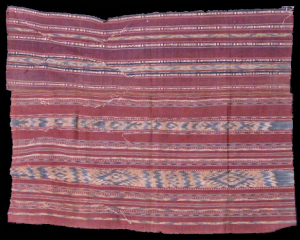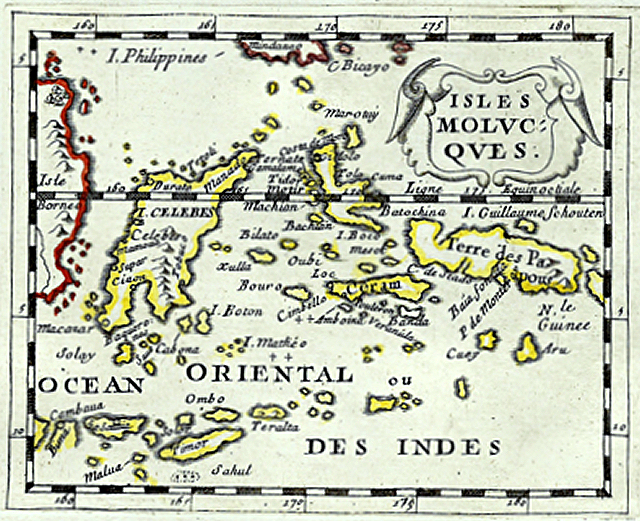Seram, the mysterious source of 'kain timur'
Ikat textiles from Seram are rare, and seldom mentioned in literature. They are found in a only a few western museum collections (Niggemeyer, see below, mentions the three ethnological museums in the Netherlands then still in existence, and the one in Frankfurt), ususually dating from the 19th and early 20th C. The existence of ikat cloth from Seram was documented already in the 17th C., in descriptions of the fairly extensive Seramese barter trade with Papuan tribes in New Guinea's Bird's Head Peninsula. Coastal tribes would raid villages in the interior to obtain slaves which might be traded for sarongs and other cloths from Seram (and occasionally from other islands such as Halmahera). Confusingly, such trade cloths were known as kain timur, perhaps because cloths used to come from Timor before. Not much is known about Seram ikat beyond the description of their use in the barter trade. There is some speculation about possible import of ikated skeins from other islands (Timor?), which comes to mind as no ikating was observed in later expeditions, such as the 1937/38 Frobenius, but is contradicted by the characteristic Seramese style, which, while showing influence from other islands, does have a distinct individuality. Characteristic of Seram ikat cloths are their strong morinda red bands, often a clearer red than is common in Nusa Tenggara, and bands with ikat in white on indigo. Common motifs are zigzag lines, diamond patterns, crosses, and patterns that resemble Timorese and Tanimbarese crocodile motifs. Another motif seen on several old Seram ikat textiles resembles the mata bili, representing the vulva, seen in some sarongs from the Lio district on Flores (see PC 045), though it is unclear if there is any influence from Florinese patterns. The pattern may also be inspired by the Timorese kaif motif (see PC 149), which is plausible given the islands' relative proximity, and would explain the term 'kain timur'. Given the little that we know with a degree of certainty, it appears most likely that ikating, while once important on Seram for local use and trade, began dying out early, perhaps by the end of the 19th C., when import of cheap textiles from other islands such as Java made textile production on the island unnecessary. |




